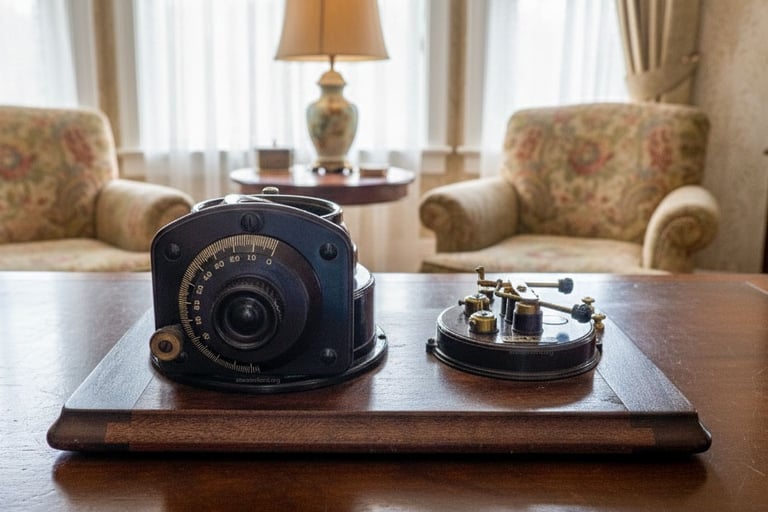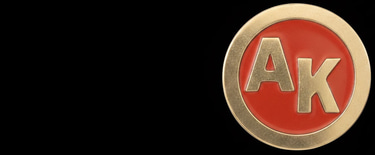
The Technology That Started It All
The Atwater Kent “breadboard” radios, manufactured between 1922 and 1924, represent one of the most exciting and significant technological leaps in American industrial history. In an era when radio was still the domain of home-brew hobbyists, A. Atwater Kent brilliantly brought the next frontier into the average home, presenting complex vacuum tube circuitry openly and elegantly mounted on a polished wooden base. This transparent design not only demystified the cutting-edge science of the day but also chronicled the blindingly fast evolution of radio itself—from simple two-tube detectors to powerful, multi-stage Tuned Radio Frequency (TRF) circuits capable of driving a speaker for communal listening. Today, over a century later, these sets resonate with collectors not just as artifacts, but as beautiful, functional monuments to innovation, making this museum and archival record an ongoing labor of love for those who cherish the golden age of broadcasting.

No. 3925 (Model 1)
The Atwater Kent No. 3925 (Model 1) Receiving Set holds the distinction of being the company's first factory-built tube radio, introduced in late 1922 with a debut price of $32.00. This two-tube "breadboard" model was simpler than its successor, featuring a tuner, detector, and a single stage of audio amplification. Its designed tube line-up often specified a Type 00 tube for the detector and a Type 01 tube for the amplifier, though collectors note the flexibility to use other contemporary tubes. Like the later Model 2, the Model 1's design was a direct response to avoiding the costly patent license for regenerative circuits held by RCA. Atwater Kent strategically sold the set without the central variometer installed. Board dimensions are 18-1/2" x 8-1/2".



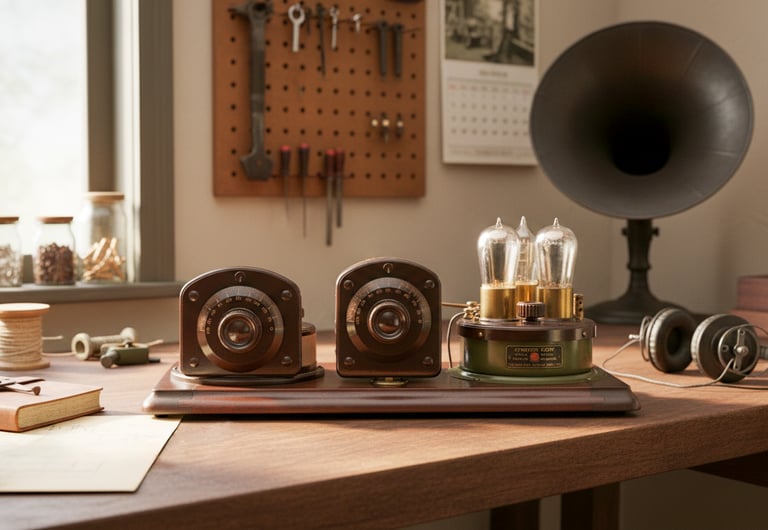

No. 3945 (Model 2)
The Atwater Kent No. 3945 (Model 2) Receiving Set is a crucial piece of early radio technology, introduced in November 1922 with an original price point of $35.50. This three-tube "breadboard" radio utilized a detector-two stage amplifier circuit, running on battery power and featuring one 1 amp UV-200 detector tube and two 1/4 amp UV-201a amplifier tubes. Its creation was a strategic move by A. Atwater Kent to enter the burgeoning home radio market while deliberately avoiding the high royalties demanded by RCA for using the regenerative circuit patent. Board dimensions are 18-1/2" x 8-1/2".

No. 3955 / No. 3960 (Model 3)
The Atwater Kent No. 3955 (Model 3) Receiving Set was introduced shortly after the Model 2, appearing in late 1922, with an original price of $37.50. This battery-powered "breadboard" radio was a three-tube set, featuring a detector-two stage amplifier circuit (a Tuned Radio Frequency or TRF design) and typically using one UV-200 detector tube and two UV-201 amplifier tubes. The key technical advancement in the Model 3 was an improvement to signal clarity: Atwater Kent engineers intentionally separated the detector tube from the audio amplifier stage on the wooden base (Board dimensions are 24-1/2" x 8-1/2"). Also available was a variant set without the Variometer and the Two-stage amplifier, part No. 3960 which was a more cost effective solution for those who may have already owned a suitable amplifier.



No. 3975 (Model 4)
The Atwater Kent No. 3975 (Model 4) Receiving Set was one of the earliest and rarest in the legendary "breadboard" line, introduced in late 1922 or early 1923. This set was a three-tube Tuned Radio Frequency (TRF) circuit, comprised of a detector and two stages of audio amplification, and it featured three main components on the board: a variocoupler, a variometer, and the detector/amplifier island. Unlike the Model 1, 2, and 3, the Model 4 was engineered to be sold as a complete system that was regenerative from the factory. Board dimensions are 24-1/2" x 8-1/2".
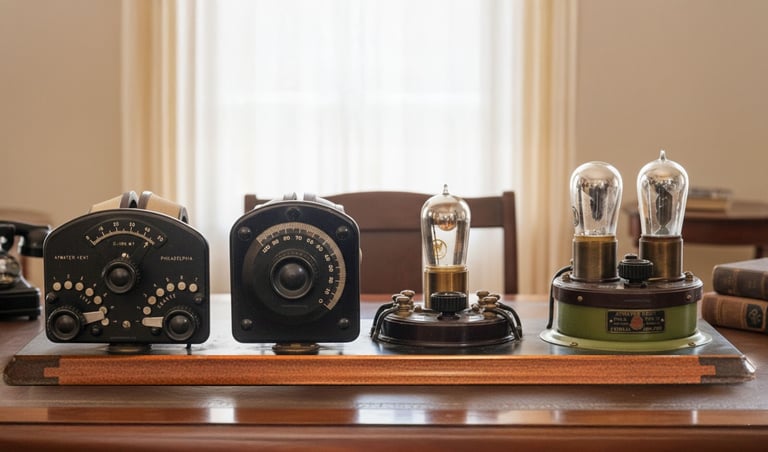


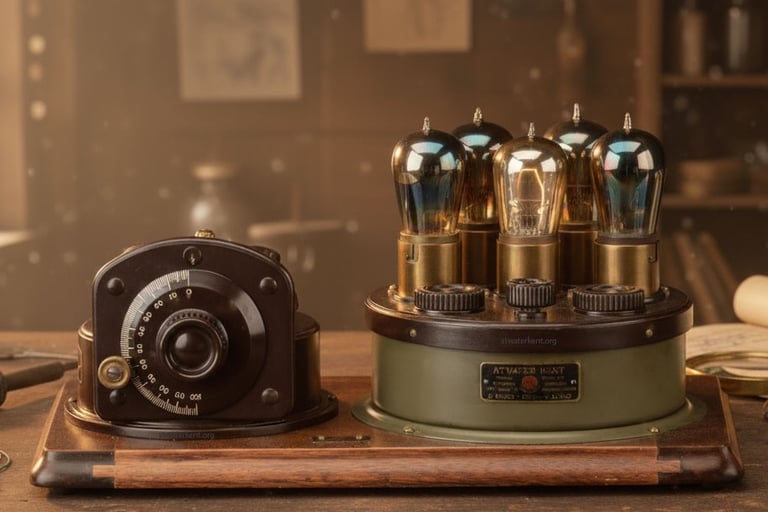

No. 4333 (Model 5)
The Atwater Kent No. 4333 (Model 5) Breadboard Radio, introduced in 1923, the Model 5 was an example of the manufacturer’s early "compact" design, yet it was reportedly discontinued shortly after its introduction due to performance issues, which contributes greatly to its extreme scarcity today. Collectors widely regard it as one of the most beautiful and sought-after breadboard models, with rare, all-original examples commanding high prices. Technically, the receiver used a circuit described as "virtually identical electrically" to the Model 4066, employing two stages of Radio Frequency (RF) amplification. Its distinctive components included a Type 11 Tuner and a five-tube TA unit (Type 4330), a component specific to the Model 5 in commercial production. Board dimensions are 18" x 10".

No. 4052 (Model 6)
The Atwater Kent No. 4052 (Model 6) Receiving Set was a significant evolution in the breadboard line, introduced in 1923 to meet consumer demand for greater sensitivity and volume as the number of broadcasting stations rapidly increased. This set was a four-tube design, representing the first major component upgrade over the three-tube Model 2 and Model 3. Its circuit was a Tuned Radio Frequency (TRF) configuration featuring one Radio Frequency (RF) amplification stage, a detector, and two stages of Audio Frequency (AF) amplification. The tube line-up utilized one UV-200 detector tube and three UV-201a tubes for the amplification stages (one RF and two AF). Board dimensions are 24-1/2" x 8-1/2".



No. 4120 (Model 6x)


The Atwater Kent No. 4120 exemplifies the company's strategy of offering modular, consumer-friendly radio upgrades in a dynamic market. Built on the standard No. 3975 board (8-1/2"x24-1/2") and sharing the same RF amplifier arrangement as the No. 4052 model, the 4120 was designed for versatility. The key difference in the 4120 lies in its use of the No. 3902 Detector unit instead of a full two-stage audio amplifier. This simplification meant the set functioned as a high-quality receiver requiring the user to connect their own external amplifier and loudspeaker. Original price for the set was $45.00.

No. 4066 / No. 4205, No. 4275 (Model 7)
The Atwater Kent No. 4066 (Model 7) Receiving Set, introduced in early 1923, this model was a five-tube set, the first in the line with this configuration, operating on a Tuned Radio Frequency (TRF) circuit. Its massive improvement over the Model 6 (four-tube) and earlier models was the addition of a second Radio Frequency (RF) amplification stage, resulting in a configuration of Two RF Stages, one detector, and two Audio Frequency (AF) amplification stages. The tube line-up often comprised five UV-201a tubes (or four UV-201a and one UV-200 detector). By employing two tuned RF circuits, the Model 7 dramatically increased both sensitivity and selectivity, effectively eliminating the need for a regenerative circuit altogether. Board dimensions are 26-1/2" x 8-1/2".
Later in the production run, they switched to part No. 4205 signifying the replacement of the No. 3815 TA Detector, 2 Stage Amplifier for the newer No. 4135 variant. One final version was released June 5, 1923, part No. 4275, this was a substitution of the No, 3902 Detector for the TA Detector, Two-stage amplifier. These were the final single-stage detector units produced by Atwater Kent.

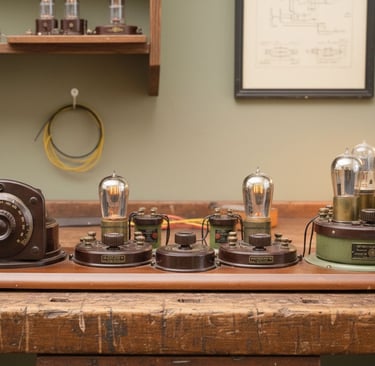

No. 4325 (Model 8 Duplex)
The Atwater Kent (Model 8 Duplex) No. 4325 Receiving Set is one of the most mysterious and prized pieces in the company’s history due to its near non-existent production. Manufactured briefly in September 1923, this five-tube breadboard was designated as the Type 4325, and historical records indicate that only 17 units were ever manufactured (though the intent was for limited production, not commercial retail). It featured a five-tube circuit, typically using five Type 01A tubes (or a 00A detector), consisting of two RF amplification stages, one detector, and two AF amplification stages. Board dimensions are 23" x 10".
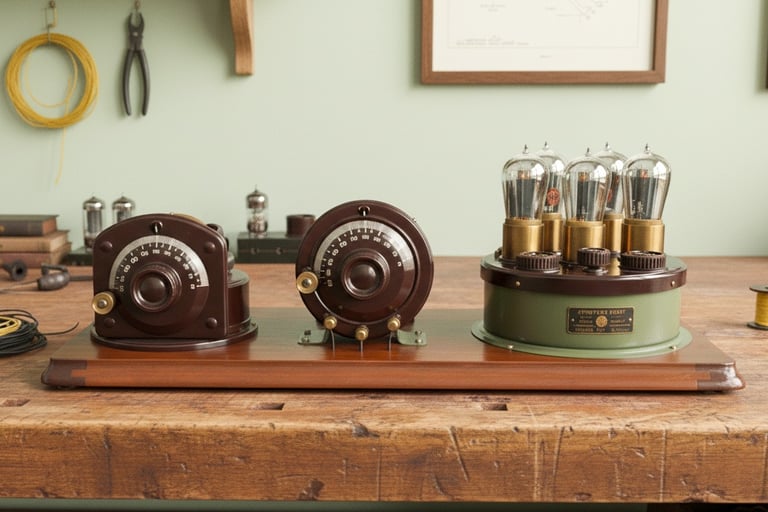


No. 4445 /A (Model 9)
The Atwater Kent (Model 9) No. 4445 Receiving Set (known as the "long board" Model 9) was an important transition model, introduced briefly in October 1923 with an original price of $68.00. This set featured a four-tube circuit consisting of one Radio Frequency (RF) amplification stage, a detector, and two Audio Frequency (AF) amplification stages. The Model 9 returned to using a single RF stage, but used two inductive tuners (a Type 11 and a Coupled Circuit tuner)—sometimes described as featuring a second variometer—to achieve a quasi-regenerative circuit that Atwater Kent hoped would be an improvement over prior designs without violating the critical regeneration patent. The Model 4445 was notably short-lived, as it was superseded almost immediately by the Model 9-A (Type 4445A), which incorporating an integral wiring harness. The early boards measured 26-1/2" x 10-1/2", later versions were only 24" x 10".

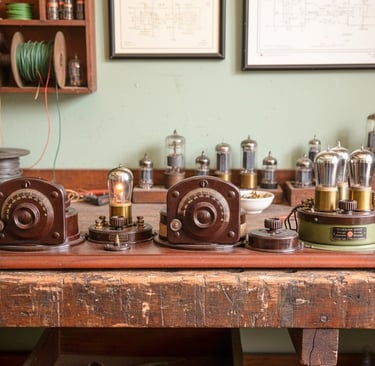

No. 4660 (Model 9C)
The Atwater Kent (Model 9C) No. 4660, also known as the "Compact 9," was introduced in 1924. A key technological advancement in the Model 9C was the replacement of the variometers with more stable and efficient variable condensers. At 20-1/2" x 10" board size, the Model 9C typically employed a four-tube circuit, utilizing one UX-201A tube for the radio frequency amplifier, a UX-200 tube as the detector, and two UX-201A tubes for the two stages of audio frequency amplification, a common configuration for high-quality receivers of the era. More closely resembling the No. 4700 Model 10C, the No. 4660 had one fewer radio frequency amplifier stages.

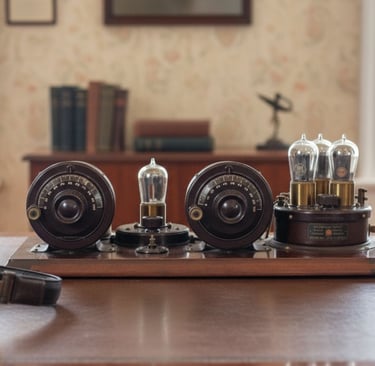

No. 4340 (Model 10 Radiodyne & Model 10) / No. 4600
The Atwater Kent (Model 10) No. 4340 Receiving Set, initially marketed as the Radiodyne, was a monumental technical breakthrough for the company, introduced on September 7th, 1923 with an original retail price of approximately $88.00 (excluding tubes). This five-tube breadboard was hailed as the "Wonder Set" for its dramatically improved performance, utilizing a Tuned Radio Frequency (TRF) circuit with three independently tuned stages. Its tube line-up typically consisted of five Type 01A tubes (or four 01A and one 00A detector). The Model 10 represented Atwater Kent’s first successful shift from inductive (coil-based) tuning to capacitive tuning, featuring three large, variable condensers (the three dials). The initial "Radiodyne" name, which is stamped on the coil tops of the earliest production run, was dropped quickly—after only 8 or 9 weeks—due to a trademark conflict and a threatened lawsuit from the Western Coil Company, which already owned the rights to the name. The rarity of the Model 4340 with the "Radiodyne" labels makes it one of the most historically desirable and valuable sets for collectors. Later Model 10 sets used gray (green), brown or black components, the final part No. 4600, used brown components exclusively. (31.5" x 10" board dimensions).



The Atwater Kent (Model 10A) No. 4550 (& 4560) Receiving Set was introduced in January 1924 as the primary successor to the short-lived Model 10 (Radiodyne) and highly successful Model 10. Maintaining the groundbreaking five-tube, three-dial Tuned Radio Frequency (TRF) circuit, the Model 10A continued to utilize two RF amplification stages, one detector, and two AF amplification stages, typically powered by five Type 01A tubes. The $88.00 price point (excluding tubes) remained consistent for this class of receiver. The Model 10A distinguished itself through several design refinements that streamlined the set: it replaced the numerous binding posts on the back panel of the Radiodyne with a single, dedicated integral wiring harness (battery cable). The production of the Model 10A, offered in both brown (4550) and black (4560) finishes, (31.5" x 10").
No. 4550 /4560) (Model 10A)
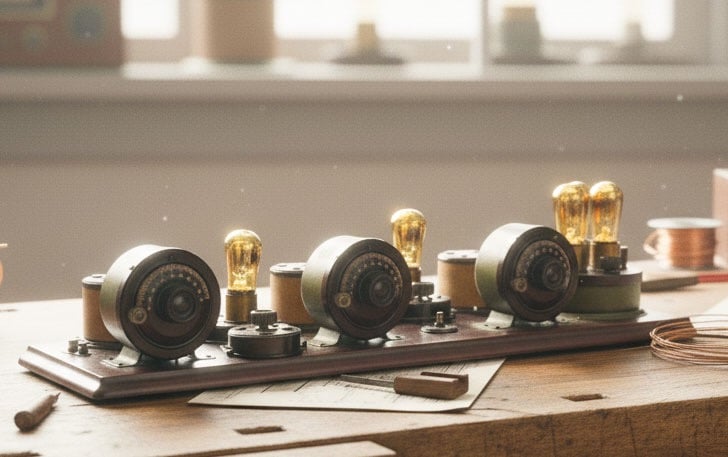


No. 4550 /4560 (Model 10B)
The Atwater Kent (Model 10B) No. 4550 (& 4560) Receiving Set was a minor but important revision in the celebrated three-dial breadboard series, introduced around 1924. Maintaining the core architecture of the Model 10A, this set featured the advanced five-tube Tuned Radio Frequency (TRF) circuit with two RF amplification stages, one detector, and two AF amplification stages, typically powered by four UV-201A tubes and one UV-200 detector tube. The key distinguishing feature of the Model 10B lay in its physical layout and operation: Atwater Kent engineers replaced the vertical mounting of the Model 10A with an orthogonal (sideways or horizontal) mounting of the RF coils. More significantly for the operator, the 10B added a three-point antenna tap switch on the first RF coil. (31.5" x 10")



No. 4700 (Model 10C)
The Atwater Kent (Model 10C) No. 4700 Receiving Set was the final and most refined mass-produced version of the three-dial breadboard, introduced on May 29, 1924. This set maintained the established, high-performance five-tube Tuned Radio Frequency (TRF) circuit, featuring two RF amplification stages, one detector, and two AF amplification stages, powered typically by four UV-201A tubes and one UV-200 detector tube. The core design of the 10C was driven by simplifying the internal circuitry for more reliable and cheaper mass production. The most notable change was the elimination of the separate potentiometer that had been present on the Models 10A and 10B. Instead, they replaced it with a fixed 800 Ohm damper resistor for controlling the RF amplifier grid bias. Two versions of the No. 4700 were produced with the same part number, a standard board length of 10" x 29", and the compact 10"x 26".
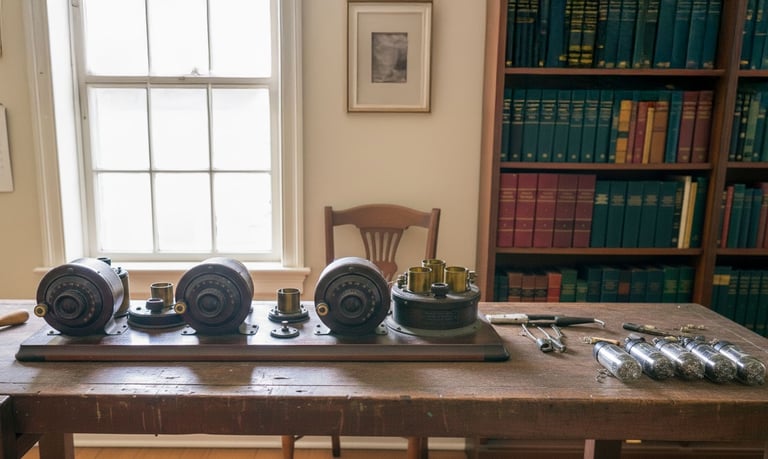


The Atwater Kent (Model 12) No. 4910 Receiving Set was introduced in early 1924 and is recognized as one of the last and most powerful models in the iconic breadboard series. The Model 12 was a direct upgrade to the Model 10 series, characterized by the addition of another stage of audio amplification, resulting in a six-tube Tuned Radio Frequency (TRF) circuit. Its configuration was comprised of two RF amplification stages, one detector, and a three-stage Audio Frequency (AF) amplifier, typically utilizing six Type 01A tubes (or five 01A and one UV-200 detector). This substantial increase in audio power made the Model 12 the premier set for driving large, external horn speakers with impressive volume and fidelity for its time. There were two earlier versions on the Model 12, part No. 4620, that was developed alongside the No. 4550 Model 10B (36" x 10"), and the part No. 4375, which was aligned to the No. 4340 Model 10 Radiodyne. This was simply put a Model 12 Radiodyne that used the same coils at the No. 4340 Model 10 Radiodyne. These variants are exceedingly rare. The 4910 board measured 34" x 10".
No. 4910 / 4620 & 4375 (Model 12)

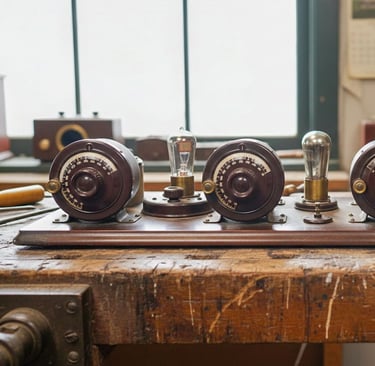

Crystal Set
The Atwater Kent Manufacturing Company never produced or marketed a complete, factory-assembled crystal radio set under an official "Model" number like their later tube radios. However, the company actively supplied the massive do-it-yourself market with high-quality components, most notably the Type 2-A Double Crystal Detector No. 4200, introduced around 1922. A functional, period-authentic Atwater Kent Crystal Set would therefore have been a homemade assembly, constructed by a hobbyist using the Type 2-A Detector combined with other Atwater Kent instruments, such as a Tuner (like the Type 11), an outdoor wire antenna, a ground, and sensitive, high-impedance headphones.
